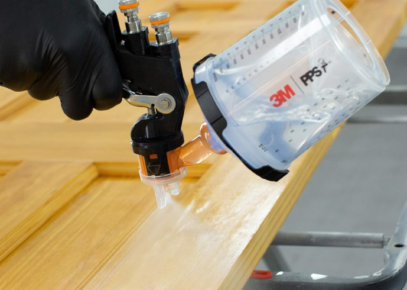Why is winter so brutal on our cars?
In a nutshell, road salt. Ever since the 1930s, road salt has been used extensively during the Winter months in Canada to lower the freezing point of moisture on road surfaces, thus helping to prevent lethal ice from forming and causing existing snow and ice to melt. Indeed, given the instant mobility demands of modern day drivers and the fact that relatively few people would ever consider fitting winter tyres, road salt remains a cost-effective option for managing road safety. However, road salt is far less welcome from the point of view of motoring enthusiasts and the wider environment in terms of the long-term damage it causes to cars and man-made structures; salt deposits tend to harbour moisture and vastly accelerate metal corrosion processes.
Winterizing your cars
Providing additional protection for your vehicle inside out in the wintertime is vital to maintaining the paint especially under the extreme weather conditions, but also the wheels and glass. Snow and ice, and the scraping it takes to remove them, can be as rough on your vehicle as they are on you. This article will walk you through a few products and procedures that will give your vehicle just what it needs to weather the winter storm.
Protect Your Glass
Your windshield faces a couple different winter-caused problems. First, it can easily crack under the weight of a night’s snowfall. Second, it can quickly be coated in ice – leaving you to scrape for half an hour before work. Without the luxury of an enclosure, it’s time to cover your glass and arm it with the right weaponry for an upcoming (and unpredictable) winter.

Your wiper blades take quite the beating during any type of storm, especially snow. Constant usage can lead to a failing, streaking arm that impairs your vision and puts your passengers and other drivers on the road in danger. Take action before the first snowflake hits your windshield by installing a heated wiper blade, a star player in winter auto accessories and certain to cut through ice and snow at a burning 200° F. Alternatively, there are also windshield washer heaters that mist hot fluid onto your windshield by heating your pre-existing windshield fluid.
As for your windshield itself, there’s no need to ruin yet another credit card with forceful ice-scraping. Put the plastic away and introduce your windshield to its new best friend for the winter season, the windshield snow cover. These designed-to-fit covers act as a barrier between your glass and snow, eliminating the need to toil over scraping. Most of them conveniently roll up as well.
Monitor tire pressure
Tire pressure is measured by pounds per square inch (PSI). If uncertain about what level of PSI your tire should be, the proper inflation level can typically be found inside the driver’s door jam.
In addition, there are specific styles of tires that can help navigate wintry weather better than others.
A good rule of thumb is to at least have an all-season tire when driving in conditions below 40 degrees Fahrenheit. For those living in regions where temperatures may routinely approach zero, Gliss said it’s wise to look into winter tires, which are built for superior traction and handling on snowy or icy roads.
Add a coat of wax to your car
Michelin states that a fresh coat of wax before the snow starts falling can help protect a car against damage from salt and dirt on the roads. Road salt, while an important factor to combat icy roads, can cause extensive damage to vehicles over time because it is corrosive.
3M recommends using its product on the lower parts of the vehicle, including behind the wheels, quarter panels and front grille. This is because ice, snow and salt tend to build up and stay in these areas the longest.




